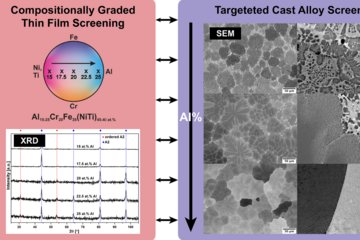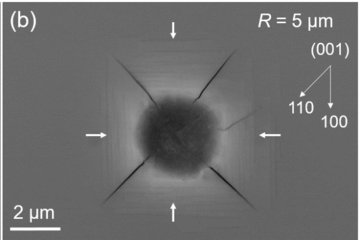All genres
1061.
Talk
Multi-technique investigation of Fe-rich intermetallic compounds for more impurity-tolerant Al alloys. Annual Meeting of DPG and DPG-Frühjahrstagung (DPG Spring Meeting) of the Condensed Matter Section (SKM) 2024, Berlin, Germany (2024)
1062.
Talk
Basic Materials Science Aspects of Green Metal Production. Royal Society Conference on Sustainable Metals: Science and Systems, London, UK (2024)
1063.
Talk
Some Materials Science Aspects Behind Sustainable Steel. Colloquium Lecture, Engineering Department, Freiburg University, Freiburg, Germany (2024)
1064.
Talk
Accelerated Continuum Crystal Plasticity and Phase Field Microstructure Modeling Using U-Net. MRS Fall Meeting, Boston, MA, USA (2023)
1065.
Talk
Green Steel Production by Hydrogen-Based Plasma Reduction of Iron Oxides. MRS Fall Meeting, Boston, MA, USA (2023)
1066.
Talk
Atomic Scale Analysis Reveals the Interplay between Grain Boundary Structure and Composition. MRS 2023, Boston, MA, USA (2023)
1067.
Talk
The Materials Science Behind Hydrogen-Based Steel Making. NIMS Award Commemorative Lecture 2023, Tsukuba, Japan (2023)
1068.
Talk
The Interplay of Lattice Defects and Chemistry at Atomic Scale and Why it Matters for the Properties of Materials. Van Horn Distinguished Lecturer Series, Cleveland, OH, USA (2023)
1069.
Talk
The Materials Behind Green Steel. Van Horn Distinguished Lecturer Series, Cleveland, OH, USA (2023)
1070.
Talk
The 2 Billion Ton Question—How Can Metals Become More Sustainable? Van Horn Distinguished Lecturer Series, Cleveland, Ohio, USA (2023)
1071.
Talk
Discontinuous yielding in ultrafine-grained duplex medium-Mn steels. Discontinuous yielding in ultrafine-grained duplex medium-Mn steels, Darmstadt, Germany (2023)
1072.
Talk
Identifying multielement active sites as a design strategy for high-performance laser-generated H2O2 electrocatalysts. Atom Probe Tomography & Microscopy conference, Leuven, Belgium (2023)
1073.
Talk
Reducing Iron Oxide with Ammonia: A Sustainable Path to Green Steel. EUROMAT2023, Frankfurt am Main, Germany (2023)
1074.
Talk
The chemical, thermodynamic and kinetic roles of pores in the hydrogen-based direct reduction of single-crystalline wüstite into iron. EUROMAT 2023, Frankfurt, Germany (2023)
1075.
Talk
Interaction of Hydrogen/ Deuterium with defects in two-phase steels. FEMS EUROMAT, Frankfurt, Germany (2023)
1076.
Talk
Basic science behind green steel making. 2023 International Symposium on Hydrogen Metallurgy (ISHM2023), Chongli, China (2023)
1077.
Talk
Tackling hydrogen embrittlement sensitivity and poor low-temperature toughness of austenitic high manganese lightweight steel. Thermec 2023 - International Conference on PROCESSING & MANUFACTURING OF ADVANCED MATERIALS, Vienna, Austria (2023)
1078.
Talk
Experiment and Simulation Advances for atomic scale characterization using analytical field ion microscopy. Microscopy & Microanalysis 2023 (M&M 2023), Minneapolis, MN, USA (2023)
1079.
Talk
Advanced Data Processing and Ab Initio Simulations for Insights into Atom Probe Tomography Correlations. Workshop on local probes of chemical bonding and atom probe tomography (RWTH), Aachen, Germany (2023)
1080.
Talk
The deceit of steel strength ductility diagrams: A case study on high manganese lightweight steel. 7th International Conference of Engineering Against Failure ICEAF 2023, Spetses, Greece (2023)











